These high protein grains will take your meals to the next level. From favorites like oats and brown rice to ancient grains like quinoa, these are all the best high protein grains to add to your diet, with as much as 6 grams of protein per serving!
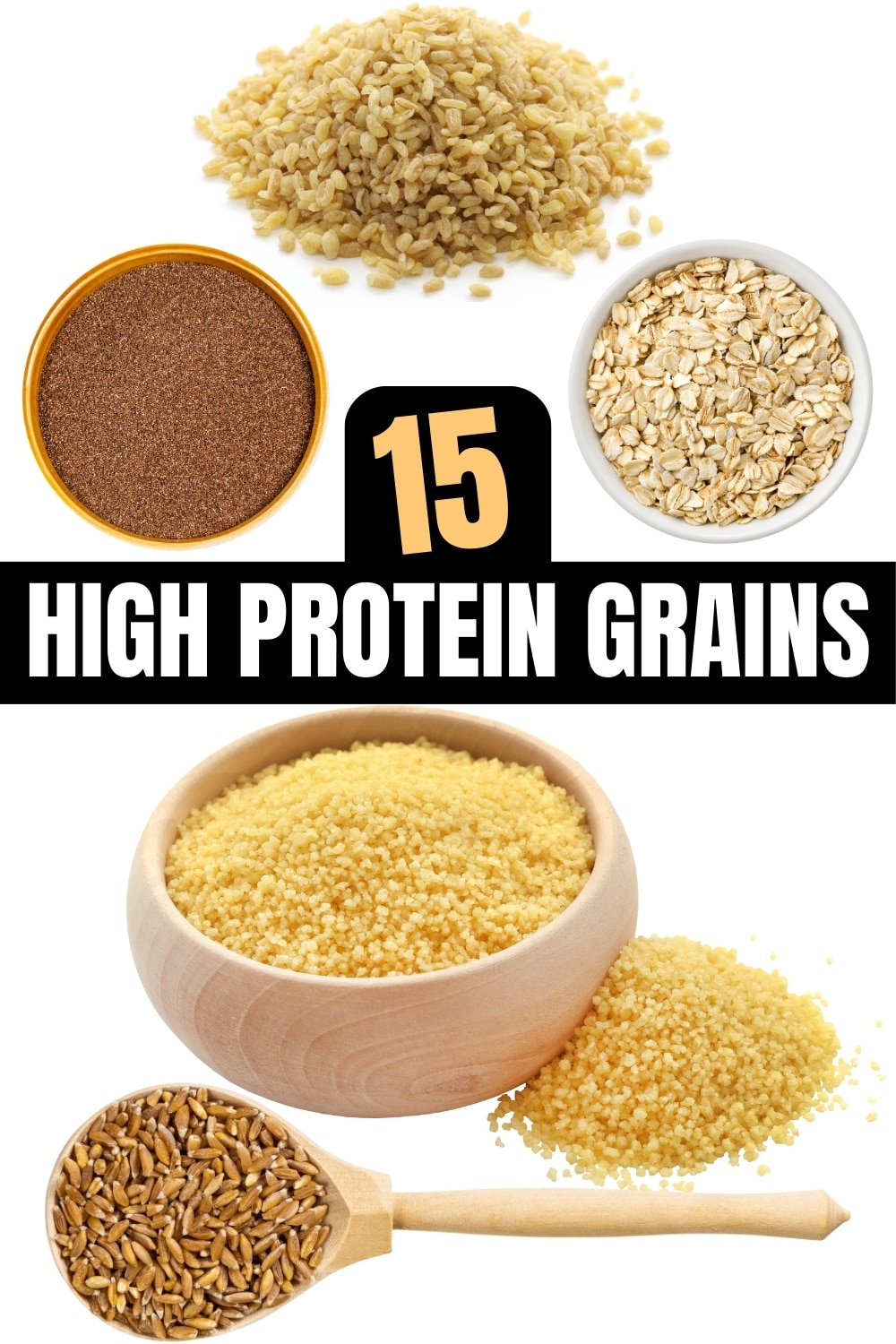
Table of Contents
Grains Highest In Protein
Grains are generally considered a source of healthy carbohydrates, but they're also an underrated option for adding more protein to your day.
Whole grains are a fantastic source of plant-based protein as well as a variety of vitamins, minerals, and amino acids. By diversifying the kinds of whole grains you eat, you can also incorporate a broader range of these nutrients into your diet while increasing your protein intake.
So, if you want to get the most out of your grains, take a look at this list of the best high protein grains you can eat!
1. Kamut

Nutritional Info for 100g, cooked:
- 132 Calories
- 0.83g Fat
- 27.6g Carbs
- 4.3g Fiber
- 6g Protein
Kamut, also known as Khorasan wheat, is an ancient relative of wheat and one of the most high-protein grains you can have. Nutritionally, kamut is similar to our modern wheat but with more fiber, fewer carbs and calories, and less gluten.
Its flavor is nutty and buttery with a distinct sweetness owing to its slightly higher sugar content. Kamut grains can be eaten like wheat berries or rice and can also be made into flour for a healthier alternative to wheat flour.
2. Spelt

Nutritional Info for 100g, cooked:
- 127 Calories
- 0.85g Fat
- 26.4g Carbs
- 3.9g Fiber
- 5.5g Protein
Another ancient grain related to wheat, barley, and rye, spelt can be used in many of the same ways as wheat and has a mildly sweet and nutty flavor that's easy to incorporate into any recipe.
You can eat spelt grains simmered in water like rice, or as pasta and baked goods made with spelt flour. Spelt flour can be used as an alternative to all-purpose flour or whole wheat flour in most applications, and while it's not gluten-free, it's naturally lower in gluten and can be easier on the digestive system.
3. Buckwheat
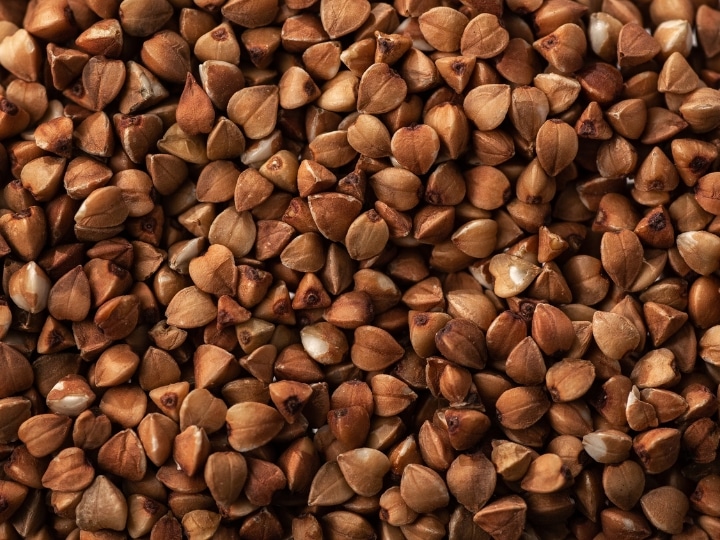
Nutritional Info for 100g, cooked:
- 99 Calories
- 0.1g Fat
- 21.4g Carbs
- 5.1g Protein
Buckwheat is one of the few grains that can be considered a complete protein, which means it has all nine essential amino acids your body needs for proper function. One of the easiest and tastiest ways to get your buckwheat protein in is through Japanese soba noodles. These tender and thin noodles are made from buckwheat flour and can be eaten in soups or dry noodle dishes.
Soba noodles made from buckwheat have almost twice the amount of protein as buckwheat groats, which themselves are already pretty high in protein at 3.4 grams per 100 grams cooked.
4. Quinoa

Nutritional Info for 100g, cooked:
- 120 Calories
- 1.9g Fat
- 21.3g Carbs
- 2.8g Fiber
- 4.4g Protein
Second to buckwheat, quinoa is the highest protein gluten-free grain you can eat, with over 4 grams of protein in a 100-gram serving. It typically comes in white, red, and black varieties, which have slightly varying flavors and textures, and you can also buy tricolor quinoa.
This pseudo-grain is a fantastic alternative to white or brown rice, with more protein, fiber, and fewer carbs, and can be eaten like a bowl of steamed rice or toasted until crisp and added to salads.
5. Wild Rice
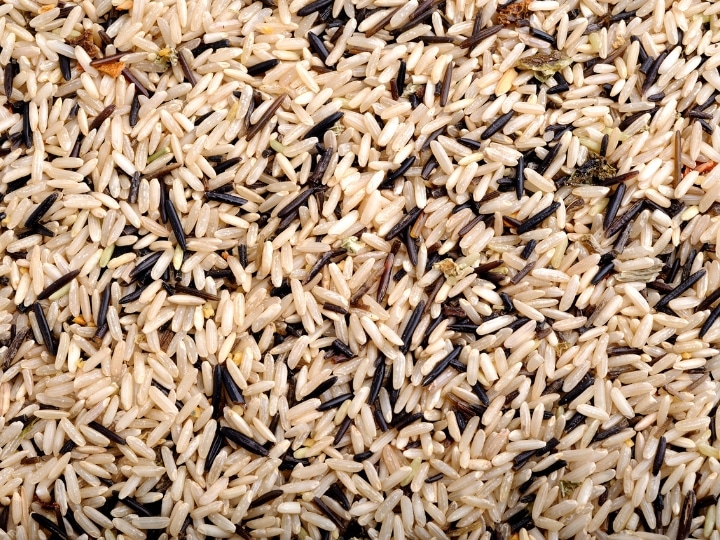
Nutritional Info for 100g, cooked:
- 101 Calories
- 0.34g Fat
- 21.3g Carbs
- 1.8g Fiber
- 4g Protein
Despite its name, wild rice isn't actually a type of rice but the seeds of an ancient grass that's been a native staple in North America for centuries. The name stems from the fact that it can be prepared and used in many of the same ways as rice.
In fact, wild rice is a great high protein substitute for whole grain rice, with nearly twice the amount of protein per serving. Try cooked wild rice in soups, pilaf, or salads, where its earthy flavor and chewy texture can really shine.
6. Teff
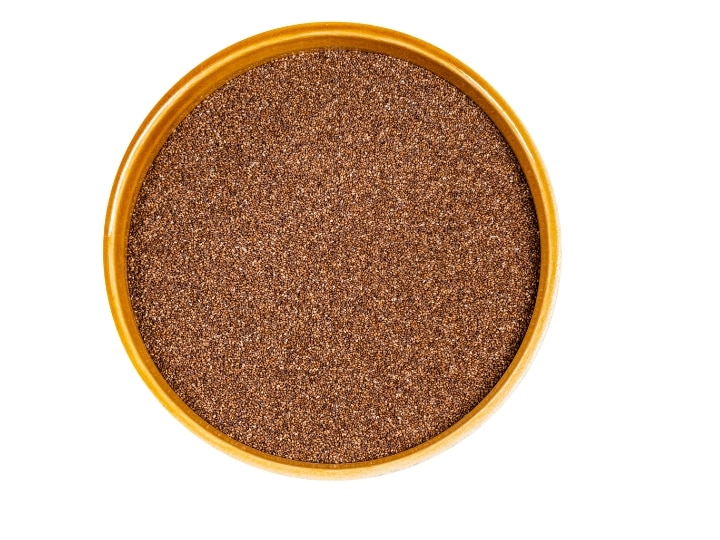
Nutritional Info for 100g, cooked:
- 101 Calories
- 0.65g Fat
- 19.9g Carbs
- 2.8g Fiber
- 3.9g Protein
This traditional grain hailing from Ethiopia is considered the smallest grain in the world, each grain measuring only about a millimeter long, but it packs a high protein punch. Teff has a mild nutty and earthy taste, and the whole grains can be prepared like hot cereal, while teff flour can be used for baking on its own or combined with other flours.
7. Amaranth

Nutritional Info for 100g, cooked:
- 102 Calories
- 1.6g Fat
- 18.7g Carbs
- 2.1g Fiber
- 3.8g Protein
Like buckwheat, amaranth is a high-quality, complete protein with all nine essential amino acids. It's also packed with minerals, with over 90% of your daily recommended intake of manganese and 25-40% of iron, selenium, phosphorus, magnesium, and copper.
This high protein grain tends to have a gelatinous quality when cooked in liquid, so some of the best ways to cook it are dry roasted, cooked like oatmeal, mixed with rice, or used to thicken and bulk up soups or stews. You can also cook with amaranth flour, which is naturally gluten-free.
8. Couscous

Nutritional Info for 100g, cooked:
- 112 Calories
- 0.16g Fat
- 23.3g Carbs
- 1.4g Fiber
- 3.8g Protein
Couscous is sometimes mistaken for a grain but is actually a kind of pasta made from semolina flour and water. The flour is rolled into tiny pieces to form a grain-like consistency that can be prepared and eaten like rice. Cook couscous with water or stock and enjoy it as a side dish, tossed in pasta, or simmered in soup.
9. Millet

Nutritional Info for 100g, cooked:
- 119 Calories
- 1g Fat
- 23.7g Carbs
- 1.3g Fiber
- 3.5g Protein
Though originally used in the US as feed for livestock and birds, millet is actually one of the most prominent cereal grains in the world and has been steadily gaining popularity locally for its health benefits, gluten-free quality, and versatility, on top of being an extremely hardy crop that's naturally pest-resistant and easy to grow. These protein-rich starchy grains can be eaten as porridge, risotto, or stuffing, mixed into rice, and made into flour or puffed grains.
10. Sorghum
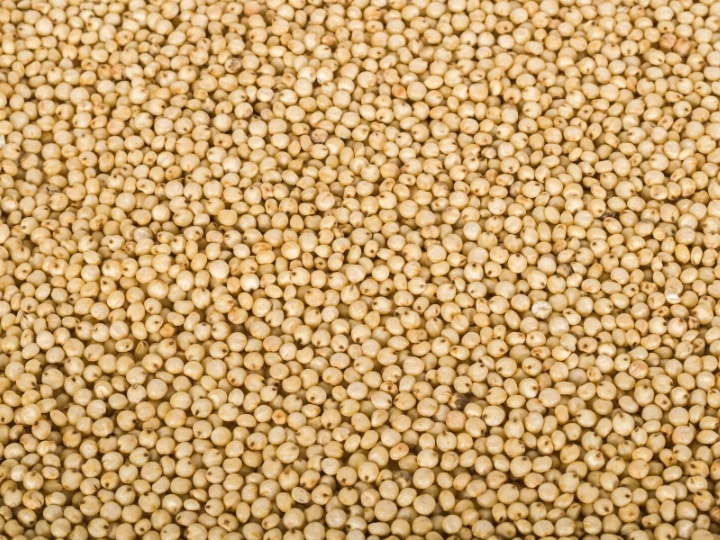
Nutritional Info for 100g, cooked:
- 108 Calories
- 1.03g Fat
- 23.7g Carbs
- 2.6g Fiber
- 3.4g Protein
Sorghum is a close relative to corn, with more protein, vitamins, minerals, and antioxidants, making it a powerhouse substitute. There's a huge variety of ways to enjoy sorghum, whether cooked as a replacement for rice, oats, or quinoa, used as gluten-free flour, or even popped in a pan. Popped sorghum is a delicious alternative to popcorn, but much smaller, with more nutrients and a naturally sweeter flavor profile.
11. Farro
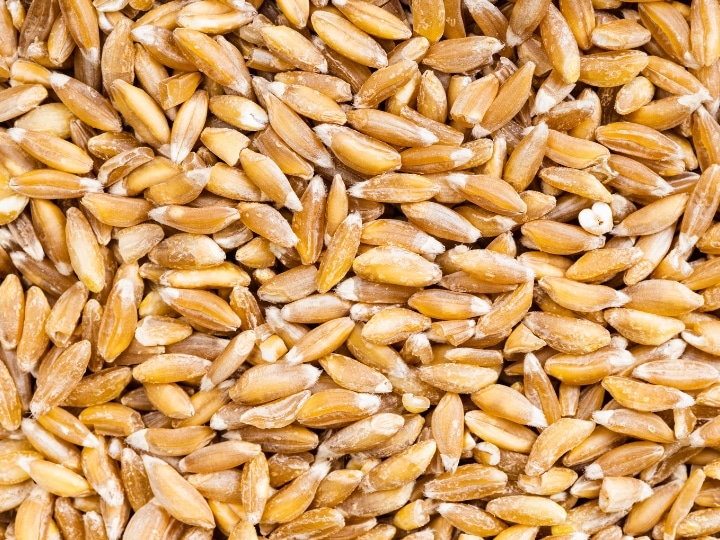
Nutritional Info for 100g, cooked:
- 88 Calories
- 0.4g Fat
- 19.3g Carbs
- 3.3g Fiber
- 3.4g Protein
This nutritious ancient grain is a favorite substitute for brown rice as it has a similar soft and springy texture and nutty taste that goes well with so many dishes. In addition to being high in protein, it's also a good source of vitamin B3 and minerals magnesium and zinc. Farro is a kind of wheat, though, so it's worth noting that it contains a similar amount of gluten.
12. Bulgur

Nutritional Info for 100g, cooked:
- 83 Calories
- 0.24g Fat
- 18.6g Carbs
- 4.5g Fiber
- 3.1g Protein
Bulgur is a kind of cereal grain made from cracked wheat, typically durum wheat, but it can also be made from varieties like einkorn. It's made by parboiling whole wheat groats, then drying and grinding them to produce rice-like granules that cook super quick and retain all the nutritious benefits of whole grain wheat.
Depending on how coarsely it's been ground, bulgur wheat can be cooked in just 10-15 minutes and is a fantastic and tasty alternative to rice or pasta in a meal.
13. Oats
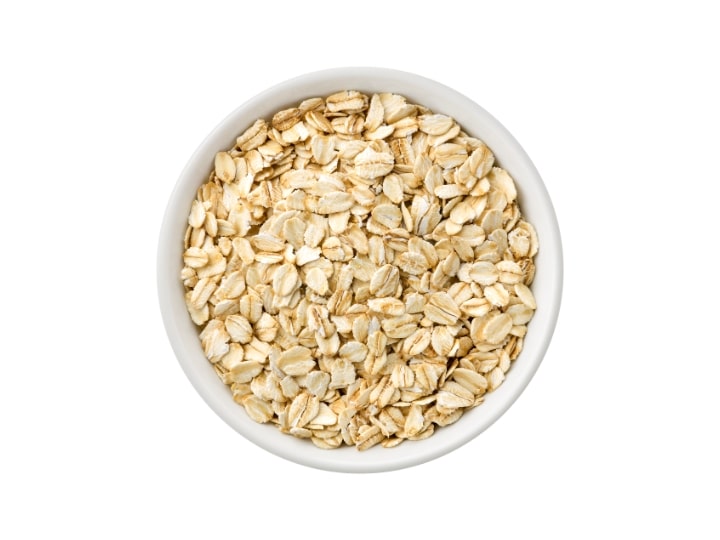
Nutritional Info for 100g, cooked in water:
- 71 Calories
- 1.5g Fat
- 12g Carbs
- 1.7g Fiber
- 2.5g Protein
A simple bowl of oatmeal in the morning is an easy way to add protein to your day, with around 2.5 grams of protein in 100 grams when cooked in water. You can boost the protein content even more with high-protein add-ons like milk, peanut butter, or protein powder, like in these protein overnight oats. Oat flour is also good for making protein-rich baked goods and dishes like these oat flour pancakes.
14. Barley

Nutritional Info for 100g, cooked:
- 123 Calories
- 0.44g Fat
- 28.2g Carbs
- 3.8g Fiber
- 2.3g Protein
Barley is most popularly known for its use in beer production, but hulled and pearled barley is also great for eating, with a toothsome texture that's reminiscent of pasta, while barley flour can be used to partially replace regular flour in baking. Barley is a long-domesticated grain that's closely related to wheat and has gluten, though it isn't a kind of wheat and has its own distinct nutritional profile featuring higher levels of vitamins and minerals.
15. Brown Rice

Nutritional Info for 100g, cooked:
- 112 Calories
- 0.83g Fat
- 23.5g Carbs
- 1.8g Fiber
- 2.3g Protein
A versatile grain and a favorite for bulking up meals, cooked brown rice provides over 2 grams of protein in just half a cup. Brown rice is the whole grain equivalent of white rice and provides much more nutritional benefits, protein, and fiber. It's also a fantastic source of B vitamins, with 15-30% of your daily recommended intake of vitamins B1, B3, B5, and B6 more than almost any other grain.


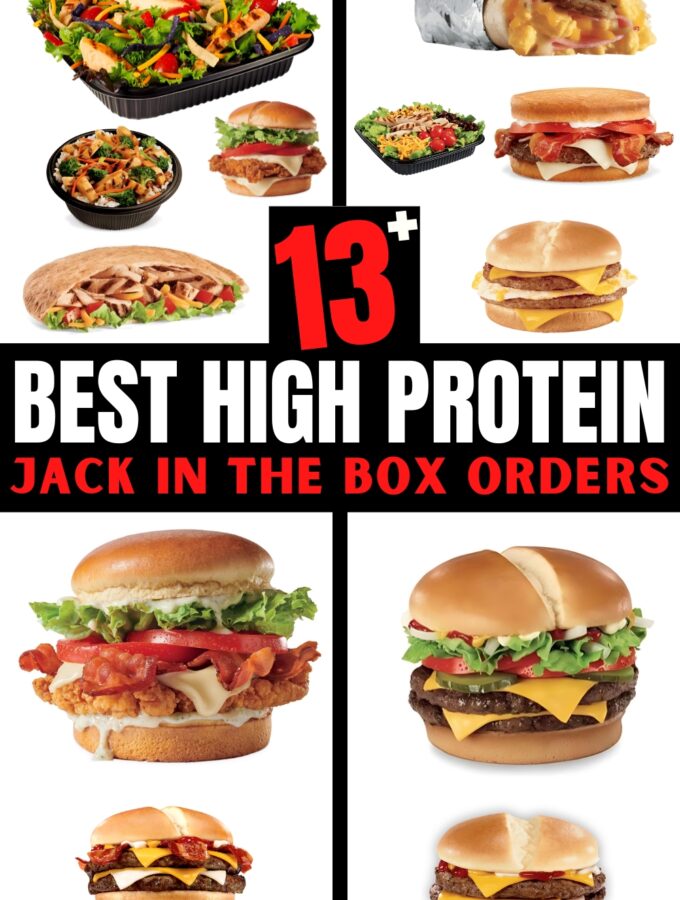


I had no idea that Kamut has the most protein as far as grains go. Thank you so much for putting this list together I learned so much 🙂